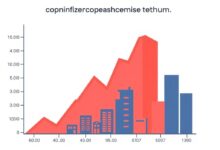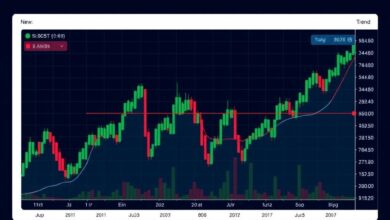What is portfolio drift and how to fix it

The key to maintaining your investment strategy lies in regular rebalancing of your asset allocation. This process ensures that the proportions of various assets align with your risk tolerance and long-term financial objectives. For instance, if equities have performed exceptionally well, their weight in your portfolio may exceed your target allocation, increasing exposure to market volatility. To mitigate this, consider selling a portion of those assets and reallocating funds to underperforming sectors.
Monitoring the balance between different asset classes is essential for achieving consistent returns. A diversified approach not only spreads risk but also capitalizes on varying market conditions. Aim for a mix that reflects both growth potential and stability; for example, combining high-yield stocks with fixed-income securities can create a buffer against downturns while still allowing for upside gains.
It’s advisable to conduct periodic reviews–quarterly or semi-annually–to assess whether your current allocations still reflect your goals and risk appetite. Adjustments should be made based on significant life changes or shifts in market dynamics. By proactively managing these adjustments, you enhance the likelihood of meeting your financial milestones without unnecessary exposure to volatility.
What is Portfolio Drift?
Maintaining a consistent asset allocation is crucial for managing risk effectively. As market conditions fluctuate, the weightings of different assets within a portfolio can shift, resulting in imbalances that deviate from the original strategy. This phenomenon necessitates vigilant monitoring and timely rebalancing to realign investments with intended targets.
To mitigate drift, set specific thresholds for asset class deviations–typically around 5% to 10%. Once these limits are breached, initiate a rebalance to restore your desired allocation. Consider regular reviews on a quarterly or semi-annual basis to ensure alignment with financial goals and risk tolerance.
Utilizing automated tools can streamline this process, providing alerts when reallocations are necessary. Prioritize maintaining balance over time; even minor adjustments can significantly enhance long-term performance and reduce exposure to unwanted risk.
Causes of Portfolio Drift
Market fluctuations significantly impact asset allocation, often leading to unintended shifts in weightings. For instance, a stock that outperforms others may occupy a larger share than originally intended, skewing risk exposure.
Changes in investment strategy can also contribute to misalignment. When objectives evolve or new sectors are favored, existing assets might not align with the revised vision, necessitating a reassessment of holdings.
Economic factors, such as interest rate changes or inflation rates, influence how different investments perform. These elements can alter the expected returns and create discrepancies between current allocations and target balances.
Behavioral biases play a role; investors might hold onto underperforming assets due to emotional attachment or fear of loss. This reluctance can prevent timely rebalancing and lead to increased risk levels in the portfolio.
Lack of regular monitoring is another critical factor. Without frequent assessments, it becomes challenging to identify when rebalancing is needed, causing allocations to drift over time without corrective action.
Liquidity constraints can hinder adjustments as well. If certain assets are difficult to sell quickly, an investor may delay necessary rebalancing efforts, further complicating their risk profile and return potential.
To mitigate these causes, establish a disciplined review schedule. Regularly evaluate asset performance against benchmarks and adjust holdings accordingly to maintain an appropriate risk balance and optimize returns.
Measuring Portfolio Drift
Implement a systematic approach to quantify deviations in asset allocation. Regularly assess your investment mix against predetermined targets to maintain desired risk levels and optimize returns.
- Set Benchmarks: Identify specific benchmarks for each asset class within your portfolio. This will serve as a reference point for evaluating performance and allocation shifts.
- Use Percentage Analysis: Calculate the percentage differences between current allocations and target allocations. For instance, if equities are targeted at 60% but currently represent 70%, note this discrepancy for corrective measures.
- Track Performance Metrics: Monitor total returns and individual asset performance regularly. Discrepancies may indicate the need for rebalancing or reconsideration of certain investments.
Employ quantitative tools to automate drift detection:
- Software Solutions: Utilize portfolio management software that tracks allocations in real time, alerting you when drift exceeds preset thresholds.
- Risk Assessment Models: Integrate models that evaluate risk exposure based on current versus targeted allocations, helping identify potential vulnerabilities in market conditions.
The frequency of these evaluations should align with your investment strategy–monthly reviews may be suitable for active traders, while quarterly assessments might suffice for long-term investors. Adjustments should be made promptly to align with desired balance and risk profiles, ensuring the pursuit of optimal returns continues unabated.
Strategies to Rebalance
Implement a systematic approach by establishing clear thresholds for asset allocation deviations. Aim for a rebalancing trigger at 5% shifts from target allocations. This tactic ensures that your exposure aligns with intended risk levels, mitigating potential overexposure to high-performing assets.
Consider scheduled rebalancing intervals, such as quarterly or annually, regardless of market conditions. This discipline helps avoid emotional decision-making and maintains focus on long-term returns.
Utilize tax-efficient strategies during the reallocation process. Prioritize selling underperforming assets in tax-advantaged accounts to minimize capital gains impacts while maintaining desired asset distribution.
Incorporate a risk-based approach by adjusting allocations based on changing market volatility. Increase holdings in defensive sectors during turbulent times and shift towards growth-oriented sectors when stability resumes.
Analyze correlations among assets regularly. Diversification is key; ensure that asset classes are not overly correlated, which can magnify risk during downturns. Adjust your mix accordingly to enhance resilience against market fluctuations.
Leverage technology and portfolio management tools to automate rebalancing tasks. Automated solutions can help maintain adherence to your strategy while reducing manual oversight and related errors.
Lastly, continuously review performance metrics post-rebalance. This analysis will provide insights into the effectiveness of your strategy, allowing for adjustments that optimize both risk and returns over time.
Long-term Monitoring Techniques
Implement a systematic review schedule, ideally quarterly or bi-annually, to assess asset allocation. This ensures alignment with both market conditions and personal risk tolerance.
Utilize automated portfolio management tools that provide real-time tracking of balance shifts. These platforms can alert you when allocations deviate from target percentages, facilitating timely adjustments.
Incorporate performance metrics that focus on returns relative to benchmarks. Regularly evaluate how individual assets are performing against their respective indices to identify underperformers or overachievers.
Establish a clear risk profile for your investment strategy. Use this framework to guide decision-making during rebalancing sessions, ensuring that adjustments maintain desired risk levels while optimizing returns.
Consider employing scenario analysis to project potential future states based on historical data. This provides insights into how different market conditions could affect your asset mix over time.
Document all changes made during reviews. Keeping a detailed record of decisions enhances accountability and enables reflection on past actions, ultimately improving future strategies.
Create a feedback loop by integrating learnings from each monitoring session into the next review cycle. This iterative process strengthens your approach and adapts it to evolving market dynamics.







